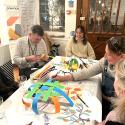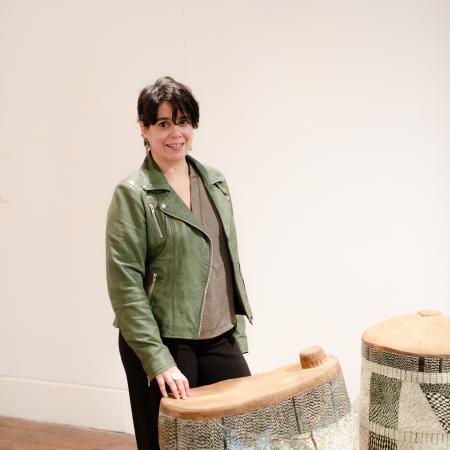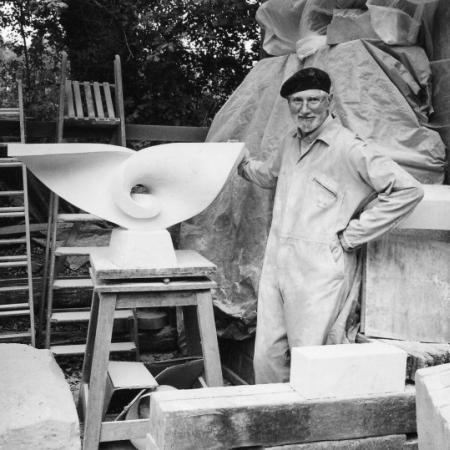This week we welcomed a wonderful group of educators, artists and creatives for our first Educators’ Social event of 2024 to explore natural and artificial worlds through cooperative gaming.
We kicked off the evening with an activity inspired by our current exhibition, showcasing the work of the Gilbert Bayes Award 2023 Winners. Curated by artist, composer and beatboxer Harry Yeff, the show draws connections and oppositions between the natural and digital spheres, and embraces technological innovation. Yeff, also known by his stage name Reeps100, positions A.I. as a collaborative partner in his work, creating musical compositions that combine both the human and digital voice.
Using the technology at our fingertips as our own collaborative partner, we set out to find unusual perspectives and views of the exhibition using our smartphones. There are things that your smartphone can do and see in a different way to the human eye. It can freeze action, blur movement, alter focus, apply filter effects and view the world from places where it is difficult or impossible to position our eyes.
The activity encouraged us to embrace the possibilities (and sometimes limitations!) of smartphone technology to find new ways of seeing and responding to art.
This was followed by a tour of the show, which touched on all manner of topics, from mycelium networks to monsters, fast fashion and the meaning of faith.
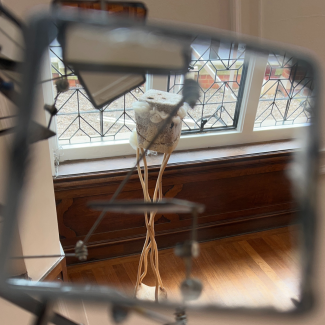
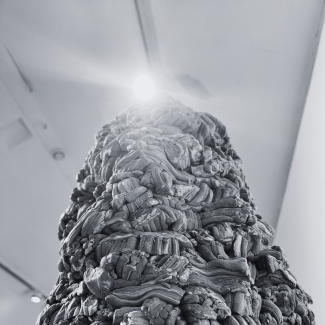
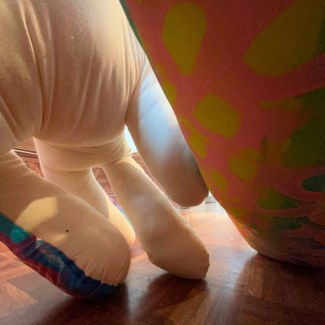
The next half of the session was led by cooperative game designer and former resident artist at the V&A Matteo Menapace. I first connected with Matteo when searching for a workshop facilitator to lead an activity on games design as part of our ‘Big Draw 2023: Drawing with the Senses’ programme. We wanted the session to be multisensory, and to explore ideas of worldbuilding and collaborative making. Taking inspiration from the fantastic map game ‘The Quiet Year’, we created a game called ‘Our Seasons’, where players would work together, using drawing, making and plenty of imagination, to build their own world and community.
The game is called ‘Our Seasons’ as it is divided up into four parts, spring, summer, autumn and winter, with each season represented by a suit in a deck of cards. Players take it in turns to draw a card, which corresponds to a prompt from the season's deck. The prompt might bring news, ask a question or instruct you to do something, and players can respond by discussing the prompt as a team, starting a building project and/or drawing on the map.
At the Educators Social, the group sat around a table entirely covered by craft paper, which was to act as their canvas and map. They were also provided with pens and pencils for drawing, as well as materials to build quick and simple models, structures and sculptures. These included strips of paper, tape, staplers, pipe cleaners, beads, foam balls, straws, lolly sticks, matchsticks and elastic bands.
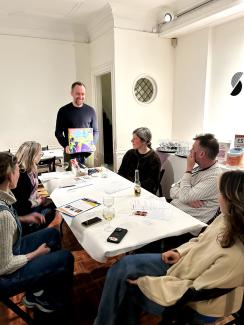
The game kicks off in spring, where the prompts are designed to get players thinking about the physical characteristics of their imagined world, and populating their map with features and structures. What sources of food are there around you? Where are you sheltering? There’s a dark place on the map. Where is it and what does it look like?
The group got stuck in straight away, and soon their table-sized canvas was filling up with strawberry fields, hovering helicopters and friendly crop-harvesting spiders!
Players can use their turn to start a new project or add to an existing one, so some of these fabulous constructions developed over time. Shady awnings were added to the communal shelter in the face of a heat wave, and the hard-working spiders were equipped with farming tools to improve food production.
As the game progresses, the prompts introduce more challenges and provocations, and players must work together to think through and act upon moral and ethical dilemmas. A project fails - which one and why? You decide to write down the group’s core rules and values- start the constitution project. Someone is caught trying to sabotage the efforts of the group - how does the group respond?
In this phase of the game we saw efforts to coppice trees and sustain the forests, to punish traitors with community service, and develop a welcoming foreign policy that still protected the society the group had built.
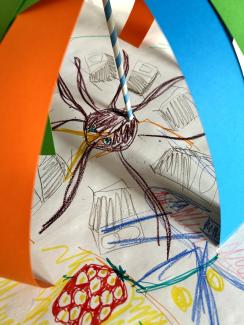

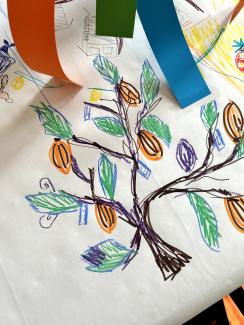
As winter draws in, the prompts also encourage the group to reflect on the game experience, what they have learned and how well they have worked together. What are you proud of achieving? What do you hope people will remember from this year?
When someone draws the King of Spades the game is over.
After a wonderfully creative hour of playing, drawing, building and thinking as a team, we spent some time talking about the game’s potential as a tool for learning.
We all agreed that playing the game together was a great, fun way to get to know and understand one another in a quick and relaxed manner. Who likes to gather advice and consensus before making a decision? Who likes to work with their hands? Who embraces change, who can mediate well and who excels at forward-planning?
Discovering the answers to these questions could be a great way to promote collaboration and team cohesion for students undertaking group projects.
The creative process can often be seen as something personal and individual, but Our Seasons invites players to let go and embrace the surprises and new directions that come when you build something collectively.
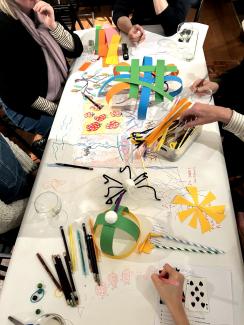
Players also build critical thinking, problem-solving and communication skills, and are challenged to think through themes and ideas relating to sociology and citizenship. They must make decisions about how to manage their imagined worlds and what sort of society they wish to be.
There are also so many possibilities for adapting the game for different contexts and objectives. Perhaps the game could be set in a medieval town under the feudal system, and ask players to build defences, harvest crops and respond to uprisings and invasions. Or it could introduce learners to the artistic possibilities of new materials, challenging them to build a shelter only from paper, or a forest made from straws.
It could be a great introduction to a new topic, an immersive and interactive experience or a light-hearted team-building activity.
The important things are that learners are immersed in a new-world that they must build together, that they work as a team through hands-on experimentation and that they let their imagination and creativity run-wild in a non-judgmental environment.
If you would like to play Our Seasons with your students, friends or colleagues you can email me at learning@sculptors.org.uk to receive a copy of the instructions and printable materials.
And don’t miss out on our next Educators’ Social in June 2024 which will focus on sustainability, the environment and found object sculpture, in response to an exhibition of work by First Plinth winning artist Madi Acharya-Baskerville.
To stay up to date with our upcoming events and activities, sign up to our educators’ newsletter here.
